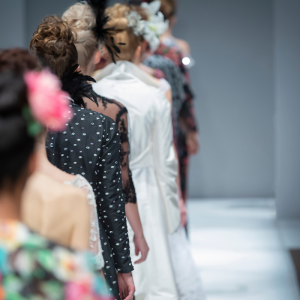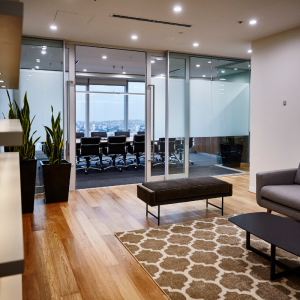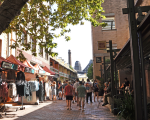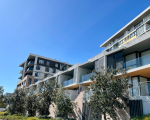A New Era of Design in Sydney
Design in Sydney has long been associated with iconic architecture, world class fashion and vibrant cultural spaces. Today, however, Sydney community designers are leading a new era of creativity, shifting the focus from grand statements to people centred projects. The Opera House, the Harbour Bridge and countless galleries still stand as proof of the city’s creative spirit, but this new wave of designers is redefining how communities connect with their environments.
These Sydney community designers are working at the intersection of creativity, culture and sustainability. They are not just creating objects or spaces. They are building connections between people and their environments. From urban planners who prioritise inclusivity to fashion labels drawing inspiration from local heritage, this new generation is reshaping Sydney’s design identity.
What Defines Community Design
Community design is more than just aesthetics. It is about involving people in the process of shaping the spaces they live in and the items they use daily. Designers in this field often collaborate with councils, neighbourhood groups and cultural organisations to ensure their projects reflect the real needs of communities.
In Sydney, this can mean creating shaded outdoor spaces for families in Western suburbs, designing affordable and adaptable housing for growing populations, or launching creative studios that give a platform to underrepresented voices. Community design often puts sustainability front and centre, making use of recycled materials, renewable energy and low impact methods of construction or production.
Urban Design with a Human Focus
Urban design in Sydney has traditionally centred around large scale developments and infrastructure projects. Today, many designers are working on smaller, community driven projects that make a big difference in everyday life.
For example, neighbourhood plazas have been redesigned with seating, greenery and inclusive playgrounds that welcome all ages and abilities. Pop up installations in inner city areas bring art to unexpected corners, encouraging people to engage with public spaces in new ways. These projects often come to life through collaborations between local councils and design collectives.
Community consultation has become a central part of the process. Instead of imposing top down ideas, designers are now holding workshops and open forums where residents can voice what matters most to them. This approach builds trust and results in spaces that people feel proud to use and maintain.
The Rise of Socially Conscious Fashion
 Fashion is another field where Sydney’s community designers are making their mark. Independent labels are rethinking the way clothes are produced, distributed and valued. Many are rejecting fast fashion cycles and instead focusing on small scale production that highlights quality and sustainability.
Fashion is another field where Sydney’s community designers are making their mark. Independent labels are rethinking the way clothes are produced, distributed and valued. Many are rejecting fast fashion cycles and instead focusing on small scale production that highlights quality and sustainability.
Brands are also working closely with local communities. Some collaborate with First Nations artists to incorporate traditional motifs and stories into their garments, creating designs that celebrate cultural heritage. Others use locally sourced fabrics and ethical supply chains that support workers in Sydney and across Australia.
Pop up markets and community fashion shows have become popular platforms where these designers can connect directly with their audiences. This interaction breaks down barriers between makers and buyers, creating a shared sense of ownership and pride in the creative process.
Interior Design for Shared Living
 Housing affordability remains one of Sydney’s most pressing challenges, and community designers are responding with innovative solutions. Interior designers are reimagining shared living spaces to make them functional, comfortable and affordable.
Housing affordability remains one of Sydney’s most pressing challenges, and community designers are responding with innovative solutions. Interior designers are reimagining shared living spaces to make them functional, comfortable and affordable.
Co living projects are on the rise, where multiple households share kitchens, gardens and communal areas. Designers are ensuring that these spaces balance privacy with opportunities for connection. Flexible furniture, modular storage and sustainable materials all play a role in creating environments that adapt to changing needs.
These interiors reflect a shift away from the idea of design as a luxury for a few. Instead, they position design as a tool for improving quality of life for many. By focusing on function, accessibility and cost effectiveness, Sydney’s community designers are tackling housing issues from a fresh angle.
First Nations Influence in Design
First Nations perspectives are becoming increasingly visible in Sydney’s design scene. Indigenous designers are bringing unique approaches to both traditional and contemporary practices, ensuring that culture and connection to Country remain at the heart of design.
Architectural projects inspired by Indigenous knowledge often prioritise natural cooling, orientation to the sun and respect for the land. In fashion and art, Indigenous creators are telling stories through prints, patterns and installations that highlight history and identity.
Collaborations between Indigenous and non Indigenous designers are growing as well. These partnerships foster understanding and create designs that acknowledge the past while building inclusive futures. This cultural influence is vital in shaping a Sydney that honours its diverse roots.
Sustainability as a Core Value
Across all fields, sustainability is a defining value for Sydney’s community designers. Many are embracing circular economy principles, where materials are reused or recycled instead of discarded. Furniture makers repurpose timber from demolished buildings, while product designers turn waste plastics into everyday items.
Sustainable design is also about energy efficiency. From solar powered art installations to passive housing techniques, designers are reducing reliance on non renewable resources. These projects not only help the environment but also demonstrate how creativity can address urgent global challenges.
Technology Supporting Creative Communities
Technology is playing a growing role in supporting community design in Sydney. Digital tools allow designers to create virtual models of proposed projects, which communities can explore and give feedback on before construction begins. This transparency helps ensure that designs truly meet local needs.
Social media platforms also allow small design studios to reach wider audiences without relying on traditional advertising. Designers can showcase their work directly to the community, building a loyal following and sparking conversations about the future of Sydney’s creative landscape.
Crowdfunding has also emerged as a way to finance projects that might not receive traditional backing. By pooling resources, communities can bring innovative ideas to life, from temporary art installations to new shared workspaces.
Challenges Facing Community Designers
Despite the positive momentum, community designers in Sydney face challenges. Securing funding for experimental or small scale projects can be difficult, especially when competing with larger commercial developments. There are also regulatory hurdles that can slow down or complicate approvals for community focused initiatives.
Balancing sustainability with affordability is another challenge. Eco friendly materials and ethical production methods often cost more, which can make it harder to deliver designs at prices accessible to everyone. Designers must constantly innovate to find solutions that do not compromise on values.
Yet these challenges also fuel creativity. Many designers see restrictions as opportunities to experiment and to push boundaries, proving that meaningful design does not always require vast budgets.
Shaping Sydney’s Future Together
Sydney’s emerging community designers are doing more than creating attractive products and spaces. They are shaping the way people live, connect and imagine their future. By prioritising inclusivity, sustainability and cultural expression, they are building a city that reflects the values of its people.
Whether it is a local plaza transformed into a vibrant meeting spot, a fashion label telling stories through fabric, or an interior space designed to bring people together, these projects highlight the power of design to strengthen communities.
The future of design in Sydney is not about iconic buildings alone. It is about everyday experiences that make life richer, healthier and more connected. And as community designers continue to rise, Sydney is becoming a model of how creativity can serve not just aesthetics but the wellbeing of all who call the city home.









